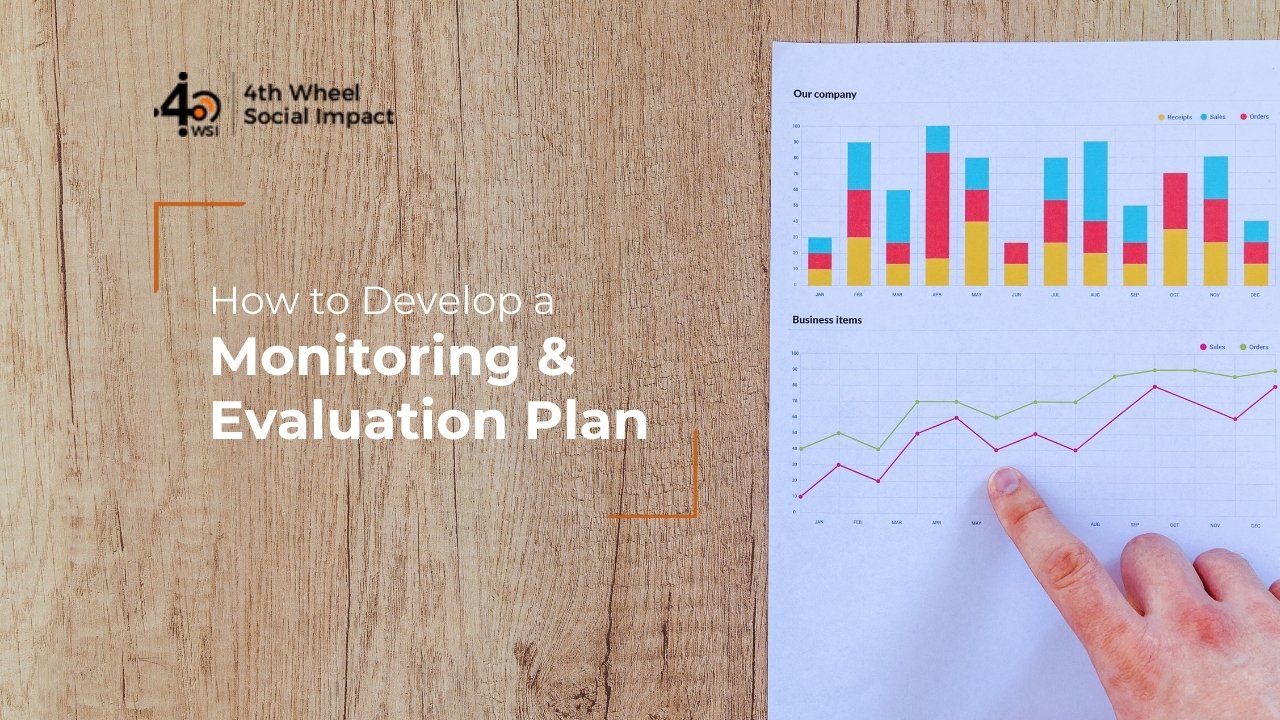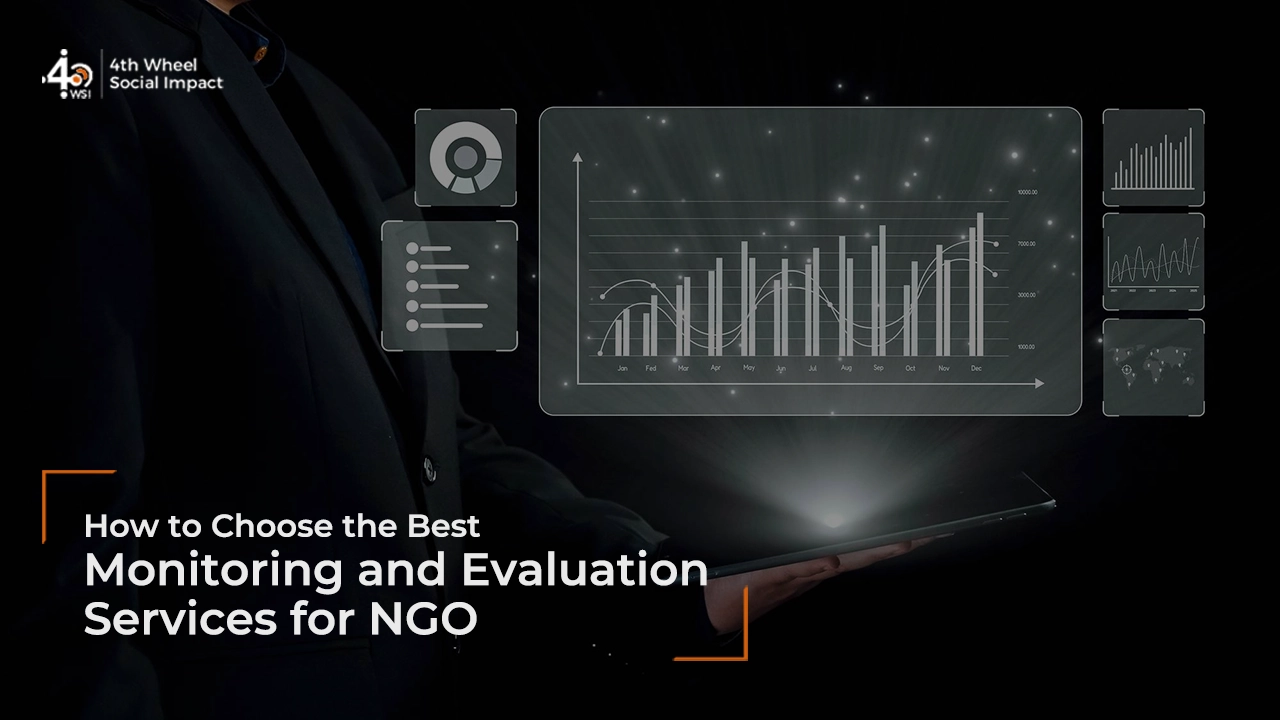Imagine launching a project with ambitious goals, only to realize halfway through that you have no clear way to measure progress or impact. This is where a well-structured Monitoring and Evaluation (M&E) plan becomes an indispensable factor for the project success.
A monitoring plan and a solid evaluation strategy outlines how a project will be tracked and assessed over time. Monitoring is an ongoing process that observes key activities in real time. On the other hand, evaluation is conducted periodically to assess outcomes, milestones, and overall project impact.
The monitoring and evaluation plan serves as a structured document that helps measure the effectiveness of interventions throughout a program or activity. To be effective, it should be clear and precise, incorporating corel components such as objectives, data collection and analysis methods, timelines for research completion, and the resources required for evaluation.
Why Develop a Monitoring and Evaluation Plan?
A Monitoring and Evaluation (M&E) plan serves as a roadmap for assessing the effectiveness of a program or initiative. Without proper monitoring, evaluation, and refinement, even the most well-intentioned projects may struggle to achieve their full impact.
An M&E plan establishes clear criteria to measure a project’s success so that objectives are met, resources are used efficiently, and tangible results are achieved. Beyond just tracking progress, it also helps identify areas that require improvement and provides actionable strategies to address them. A well-structured M&E plan not only improves project outcomes but also anticipates challenges, mitigates risks, and cultivates long-term sustainability. This eventually maximizes its impact on the communities it serves.
Who Should Develop a Monitoring and Evaluation Plan?
Creating an effective M&E plan requires input from multiple stakeholders who have a vested interest in the program’s success. These stakeholders may include program managers, funders, beneficiaries, partners, and M&E experts.
Program Managers
Program managers play a pivotal role in M&E planning, as they are deeply involved in both program execution and stakeholder engagement. They work closely with implementing teams, funders, and community members and hence, can offer insights into challenges, opportunities, and other details of the program. Their involvement makes sure that the M&E plan is aligned with on-the-ground realities and program goals.
Communities and Beneficiaries
The people directly impacted by the program are at the heart of the monitoring and evaluation plan (M&E). No one understands the program’s effectiveness better than the beneficiaries themselves. Gathering first-hand insights through surveys, focus groups, and interviews makes it certain that their voices shape program improvements. Involving the community in the M&E process helps identify real concerns, assess impact, and encourages local ownership of the initiative.
Partners and Funders
Although partners and funders may have a more high-level perspective of the project, their input is a deciding factor. Funders help direct investments where needed but partners offer technical expertise and resources to strengthen M&E processes. Regular check-ins with these stakeholders help maintain alignment, transparency, and resource optimization.
M&E Experts
Just as program managers oversee the implementation, M&E experts bring specialized knowledge to draft a strong M&E framework. They understand each stage of monitoring and evaluation, selecting appropriate tools, techniques, and methodologies to track progress effectively. Their expertise sees to it that the M&E plan is data-driven, systematic, and aligned with global best practices.
Ultimately, an M&E plan should be a collaborative effort. It should reflect the needs of all stakeholders while following established M&E standards.
Interesting Reads: Increased social spending for stronger M&E
Key Learning Objectives of an M&E Plan
An M&E plan provides valuable insights into key aspects of a program, including its goals, progress, and areas for improvement. A well-structured monitoring and evaluation plan not only answers important questions about the program but also strengthens its success rate.
Below are some of the key learning objectives of an M&E plan:
1. Defining Clear Program Goals and Success Criteria
An M&E plan provides a structured approach to defining clear objectives and determining what success looks like. It outlines various pathways to achieving program goals and helps select the most effective strategies for implementation.
2. Measuring Success and Tracking Progress
A well-structured M&E plan includes specific indicators, tools, and techniques for effective evaluation, monitoring and measuring progress. It assesses whether key milestones are being met and whether these milestones contribute to the overall program’s success. If gaps are identified, the plan allows for necessary adjustments.
3. Identifying Areas for Improvement
Programs rarely unfold exactly as planned. Unexpected challenges and hurdles arise, making continuous improvement and adaptability a very significant part of the process. An M&E plan builds flexibility into program implementation so that corrective actions can be taken whenever needed.
4. Ensuring Accountability and Transparency
Accountability is a key pillar of any successful program. An M&E plan sets clear expectations for all stakeholders, from implementing partners and funders to the communities served. By defining responsibilities and tracking commitments, it provides transparency, nurtures trust, and holds stakeholders accountable for their contributions.
5. Facilitating Informed Decision-Making
A strong M&E plan doesn’t just collect data. In fact, it transforms data into actionable insights. By dedicating resources to data collection and analysis, program decisions are grounded in real-time evidence. This leads to data-driven planning, improved resource allocation, and better long-term impact.
Steps to Develop a Monitoring & Evaluation Plan
A Monitoring and Evaluation (M&E) Plan should be developed at the start of a project to make sure that objectives are clearly defined and met. It should also be regularly reviewed and updated as the project progresses. Continuous review helps to adapt to changing conditions and refine goals. Below outlined are detailed steps for monitoring and evaluation plan:
Step 1: Identify Program Goals and Objectives
The foundation of a monitoring and evaluation framework or a plan lies in clearly defining the program’s goals and objectives. This process begins by answering three critical questions:
- What problem is the program trying to solve?
- What steps are being taken to solve that problem?
- How will program staff know when the program has successfully addressed the problem?
By answering these questions, organizations can determine the intended impact of their program and establish benchmarks for measuring success.
Step 2: Define Indicators
Once the goals and objectives are set, the next step is identifying key indicators to track progress and measure success. Effective indicators should include:
- Process Indicators: These measure the implementation of activities and answer, “Are activities being carried out as planned?”
- Outcome Indicators: These measure the effectiveness of activities and assess, “How successful has the program been in achieving its objectives?”
Balancing both types of indicators sets the tone for a comprehensive evaluation of program performance. Here’s an indicator checklist to help with defining accurate indicators according to international standards.
Step 3: Define Data Collection Methods
After defining indicators, the next step is selecting data collection methods. This should be a collaborative discussion between program staff, stakeholders, donors, and M&E experts to determine the best approach based on the indicators being measured.
An M&E plan typically tracks multiple data sources, so it becomes critical to define precise collection methods. These precise collection methods inculcate consistency and accuracy in the data collection process.
Step 4: Establish a Data Collection, Monitoring, and Tracking Timeline
A clear timeline must be established to determine how often data will be collected, monitored and how the data collection challenges will be dealt with. The timeline will depend on factors such as donor requirements, available resources, staff capacity, and the project timeline.
A well-defined timeline makes sure that monitoring activities remain systematic and aligned with project milestones.
Step 5: Identify M&E Roles and Responsibilities
An M&E plan involves multiple tasks and responsibilities, making it necessary to clearly define roles for smooth implementation. Early assignment of these responsibilities guarantees effective achievement of all objectives. To secure cooperation and alignment in accomplishing the plan’s goals, getting inputs from pertinent stakeholders, including the community, is non-negotiable.
Step 6: Creation of Analysis Plan and Reporting Templates
After the data collection process and the identification of indicators, an analysis plan must be developed. Once the analysis is complete, it is important to allocate time for discussions with relevant stakeholders to review the findings from the monitoring and evaluation process. This requires drafting a reporting plan to determine how the analysis will be presented and to develop appropriate templates, documents and guidelines.
It is also necessary to identify whether the research staff needs to perform any statistical tests to obtain the necessary insights. If so, the next task is determining which tests will be used, and what data will be analyzed? Additionally, what software will be used for data analysis and the creation of reporting tables?
Step 7: Plan for Dissemination and Donor Reporting
The final step in an M&E plan outlines how, when, and to whom data will be disseminated. This includes:
- Internal Dissemination: Regular team meetings to review data for decision-making.
- External Dissemination: Sharing findings with donors, policymakers, or the public.
- Reporting Schedules: Setting clear timelines for periodic donor reports and impact evaluation updates (e.g., monthly, quarterly, annually).
For instance, a program team may review data monthly to refine strategies, whereas donor meetings may take place on a quarterly or annual basis. Stakeholders should discuss multiple dissemination options to decide on timely communication. Active reporting will help to gather inputs that will propel the project in the correct direction.
Tools and Templates for M&E Planning
An effective Monitoring and Evaluation plan (M&E) relies on structured tools and templates. These resources provide a standardized approach to simplify assessments and determine whether a project is achieving its intended outcomes.
Commonly Used Tools for M&E Planning
Theory of Change (ToC)
Theory of change is a tool that visually maps out how specific interventions lead to desired outcomes, providing a clear roadmap for evaluation.
Indicator Tracking Tables
These tables are systematic indicator tracking frameworks that can be used to record and analyze project performance data.
Risk Assessment Matrices
These matrices help identify potential challenges and develop mitigation strategies.
Digital Tools
Software such as KoboToolbox, CommCare, and DHIS2 supports real-time data collection and analysis. Another effective data collection tool is SurveyCTO, which is extensively used by 4th Wheel Social Impact. Platforms like Google Sheets and Excel also provide customizable templates for tracking indicators, budgets, and reporting. Additionally, visualisation tools such as Google Looker, Power BI and Tableau help transform complex data into clear, actionable insights.
Logical Framework (LogFrame)
A LogFrame, short for Logical Framework, is a structured planning and management tool used for project management. It provides a systematic approach for defining key project components. A LogFrame also serves as a roadmap to guide project planners, implementers, and evaluators.
Logical Framework is one of the most effective monitoring and evaluation tools and techniques to uncover the logic behind a project’s design and implementation. By breaking the project into manageable components, it facilitates comprehensive analysis.
Interesting Reads: Difference Between Theory of Change and Logical Framework
Exploring the Logical Framework in Detail
The Logical Framework Approach and Its Components
The Logical Framework Approach (LFA) is a structured method that helps stakeholders define project objectives, outline key activities, and set performance indicators. This process is often carried out through workshops and discussions, ensuring that all involved parties share a clear understanding of the project’s purpose and expected outcomes.
Components of a LogFrame
A LogFrame is typically presented as a 4×4 matrix with four levels:
- Goals: Represents the long-term impact the project aims to achieve.
- Purpose (or Outcomes): Describes the specific changes expected as a result of the project.
- Outputs: Direct deliverables or services produced.
- Activities: Outlines the tasks required to achieve the outputs.
The matrix also includes key components such as:
- Narrative Summary: Describes each level.
- Objectively Verifiable Indicators: Measurable benchmarks to track progress.
- Means of Verification: Data sources used to assess the indicators.
- Assumptions/Risks: External factors that may affect project success.
Steps to Build a Logical Framework
- Define the Overall Goal
This step involves identifying the broad, long-term change the project seeks to achieve. - Identify Outcomes
The second step determines the measurable changes that indicate project success. - Specify Outputs
Next is listing the tangible products, services, or results the project will produce. - Outline Key Activities
At this stage, it’s pivotal to detail the specific steps required to achieve the outputs. - Establish SMART Indicators for Each Level
Here, the M&E framework involves defining indicators that are Specific, Measurable, Achievable, Relevant, and Time-bound (SMART) to track progress. - Determine Means of Verification
This step specifies how data will be collected to track indicators (e.g., surveys, reports, interviews). - Identify Assumptions and Risks
The last step considers external factors that could influence the project’s success.
Conclusion
A strong Monitoring and Evaluation (M&E) plan goes beyond tracking progress. It plays a vital role in shaping the long-term success and sustainability of a project. Additionally, an M&E plan contributes to organizational learning, helping teams document best practices, establish a vigorous evaluation system, recognize emerging trends, and build institutional knowledge that strengthens future project plans.
At 4th Wheel Social Impact, we specialize in building practical Monitoring & Evaluation (M&E) frameworks that drive sustainable growth and measurable change. Whether you need support in building M&E plans, streamlining data collection, or translating insights into action, our team is here to help. Get in touch with us today!




